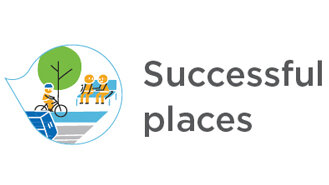Local movement
 Better Placed: Better Fit |  Future Transport: Successful places |
People experience places at a fine-grained scale. The design of places can shape demand for movement. Where an area is more permeable for pedestrians and cyclists than vehicles, getting around on foot or by bike becomes the natural choice for short trips, including deliveries (couriers and cargo bikes). Clusters of local shops, schools, stations and stops provide an efficient trip chain for daily visits from home to work and back. Considering the future context is also critical for areas undergoing change or where change is likely.
Key questions
- Is there a mix of local and community services close to homes or as a part of a trip chain to and from work, and if not, could the project facilitate this?
- Are all walking and cycling desire lines accommodated within the project boundary and all adjacent networks connected together? Has any footpath crowding, and shared path over-subscription been addressed? Are these staged for delivery on Day 1?
- Can residents access all their daily needs such as shops, schools and jobs safely without a car?
- Is there a precinct-wide strategy for loading and deliveries (delivery bots, cargo bikes, freight consolidation, laneways), parking, and kerbside activities?
- Are streetscapes designed to be attractive, interesting and welcoming to people walking and cycling, with appropriate amenities and shelter?